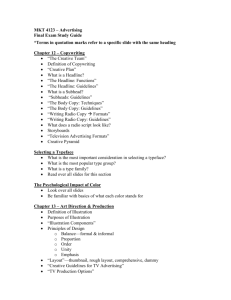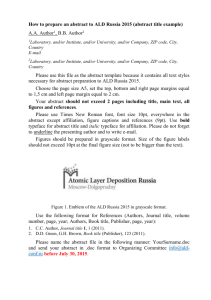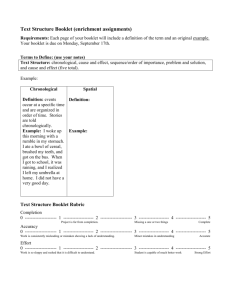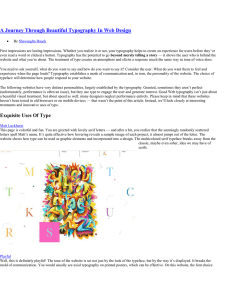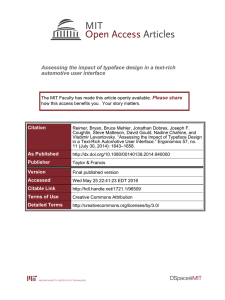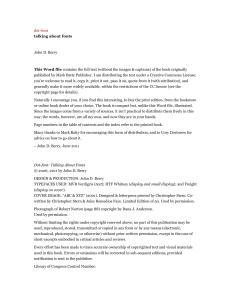type specimen book - speculate and make
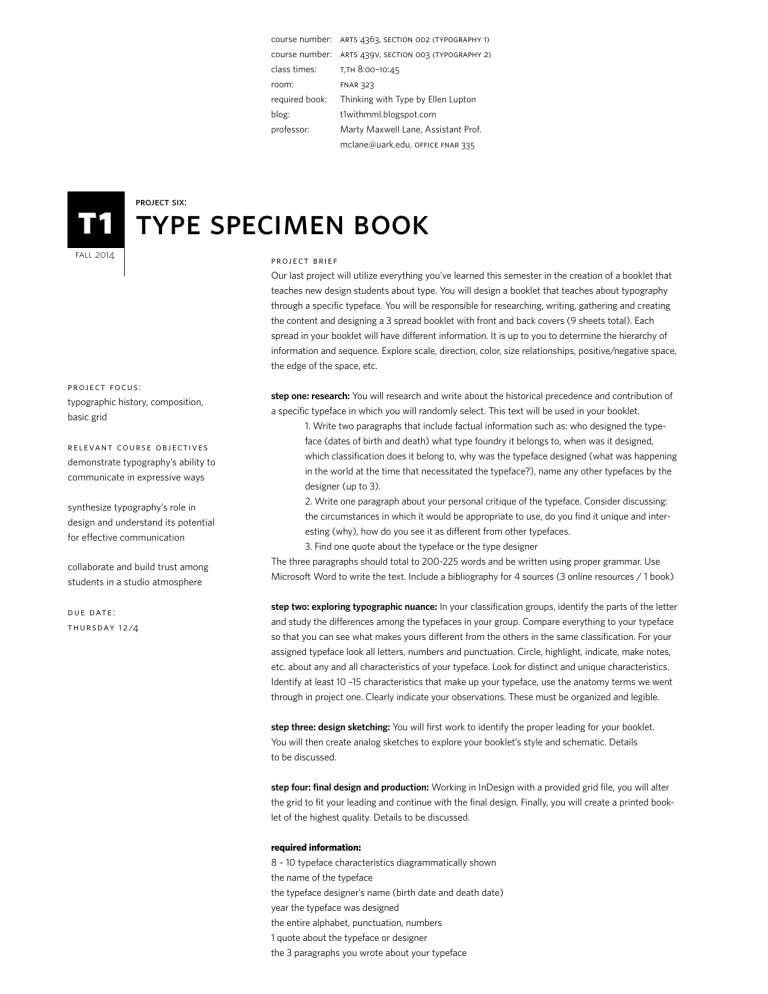
course number: arts 4363, section 002 (typography 1) course number: arts 439v, section 003 (typography 2) class times: t,th 8:00–10:45 room: fnar 323 required book: Thinking with Type by Ellen Lupton blog: t1withmml.blogspot.com
professor: Marty Maxwell Lane, Assistant Prof.
mclane@uark.edu, office fnar 335 t1
fall 2014 project six:
type specimen book
project brief
Our last project will utilize everything you’ve learned this semester in the creation of a booklet that teaches new design students about type. You will design a booklet that teaches about typography through a specific typeface. You will be responsible for researching, writing, gathering and creating the content and designing a 3 spread booklet with front and back covers (9 sheets total). Each spread in your booklet will have different information. It is up to you to determine the hierarchy of information and sequence. Explore scale, direction, color, size relationships, positive/negative space, the edge of the space, etc.
project focus: typographic history, composition, basic grid relevant course objectives demonstrate typography’s ability to communicate in expressive ways synthesize typography’s role in design and understand its potential for effective communication collaborate and build trust among students in a studio atmosphere step one: research: You will research and write about the historical precedence and contribution of a specific typeface in which you will randomly select. This text will be used in your booklet.
1. Write two paragraphs that include factual information such as: who designed the typeface (dates of birth and death) what type foundry it belongs to, when was it designed, which classification does it belong to, why was the typeface designed (what was happening in the world at the time that necessitated the typeface?), name any other typefaces by the designer (up to 3).
2. Write one paragraph about your personal critique of the typeface. Consider discussing: the circumstances in which it would be appropriate to use, do you find it unique and interesting (why), how do you see it as different from other typefaces.
3. Find one quote about the typeface or the type designer
The three paragraphs should total to 200-225 words and be written using proper grammar. Use
Microsoft Word to write the text. Include a bibliography for 4 sources (3 online resources / 1 book) due date: thursday 12/4 step two: exploring typographic nuance: In your classification groups, identify the parts of the letter and study the differences among the typefaces in your group. Compare everything to your typeface so that you can see what makes yours different from the others in the same classification. For your assigned typeface look all letters, numbers and punctuation. Circle, highlight, indicate, make notes, etc. about any and all characteristics of your typeface. Look for distinct and unique characteristics.
Identify at least 10 –15 characteristics that make up your typeface, use the anatomy terms we went through in project one. Clearly indicate your observations. These must be organized and legible.
step three: design sketching: You will first work to identify the proper leading for your booklet.
You will then create analog sketches to explore your booklet’s style and schematic. Details to be discussed. step four: final design and production: Working in InDesign with a provided grid file, you will alter the grid to fit your leading and continue with the final design. Finally, you will create a printed booklet of the highest quality. Details to be discussed. required information:
8 – 10 typeface characteristics diagrammatically shown the name of the typeface the typeface designer’s name (birth date and death date) year the typeface was designed the entire alphabet, punctuation, numbers
1 quote about the typeface or designer the 3 paragraphs you wrote about your typeface
course number: arts 4363, section 002 (typography 1) course number: arts 439v, section 003 (typography 2) class times: t,th 8:00–10:45 room: fnar 323 required book: Thinking with Type by Ellen Lupton blog: t1withmml.blogspot.com
professor: Marty Maxwell Lane, Assistant Prof.
mclane@uark.edu, office fnar 335 t1
fall 2014 project six:
type specimen book, cont.
final deliverables
One booklet of the highest quality. Craft is of the utmost importance. Paper must be high quality, properly trimmed, with no glue residue. Page size: 8” x 13”, spread size: 16” x 13”, mimimum of 3 spreads.
3
2
1
1
5 cover (text. image optional) spread one
13
8 spread two format size determined by golden section spread three margins: top, interior, exterior: .5” bottom: .6875” modules:
5 across, 8 down
1.2667” x 1.3222” each back cover (text. image optional)
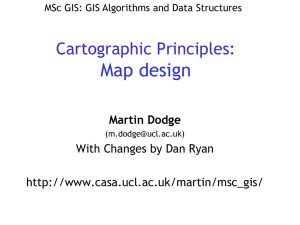

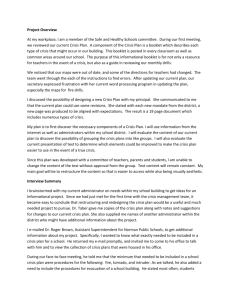
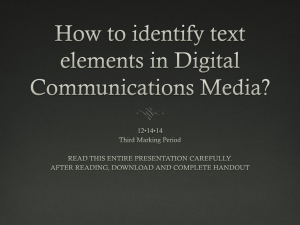
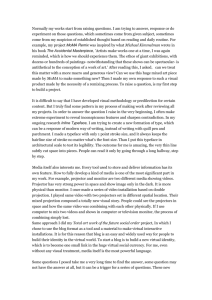
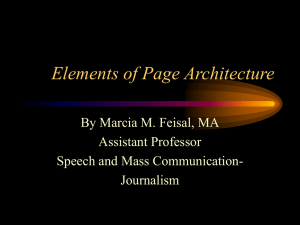
![plantilla nueva [ PLANTILLANUEVA ]](http://s3.studylib.net/store/data/006620894_1-1fda302153a06e64ef1bfac2807187ef-300x300.png)
